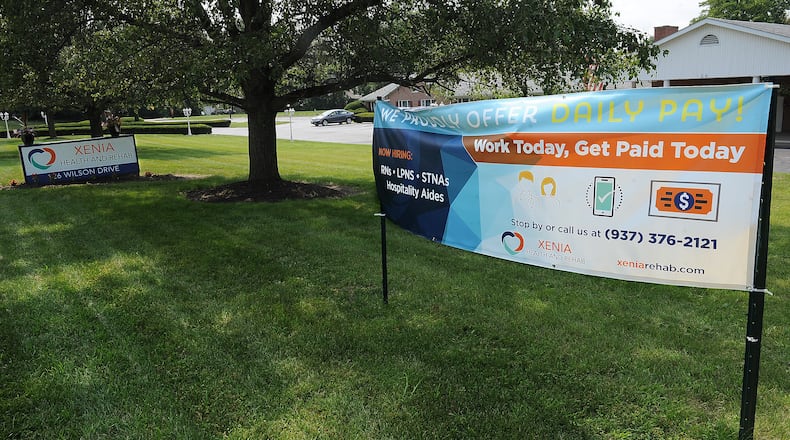For a four-week period ending June 20, on average about 32% of Ohio nursing homes had a shortage of nurses and aides for residents, per federal data aggregated by AARP.
That’s more than the national average for that time period of about 23.5% of nursing homes reporting being short on staff.
Gary Horning, Otterbein Senior Living vice president of marketing and communications, said his company has been upping wages, stepping up recruitment, and relying on more agency staff.
“There are still people that are so concerned with the pandemic that they don’t want to put themselves out there,” Horning said. “There are still people that have childcare issues where it’s difficult for them finding childcare and, as a result, coming back to work full time. And then because there is such a shortage of staff at just about any location and every location, whether it be manufacturing or fast food ... the reality is that the demand is far outstripping supply.”
Direct care at nursing homes is important work, but can also be physically and emotionally demanding. This past year, frontline nursing home staff had to wear PPE, get tested regularly, and support residents who at times at had no visitors.
Horning said with vaccinations, they haven’t had a COVID-19 case at any location in the past month and haven’t had a resident case in four to five months. But while they’ve moved past the intense outbreak threats, the hiring hasn’t rebounded.
Some facilities have cut back on services, said Pete Van Runkle, executive director of the Ohio Health Care Association, which represents long-term care facilities. He said it used to be almost unheard for a nursing home to turn down a prospective patient but now some do because they don’t have the staff.
“That’s the thing that we’re seeing is people not getting services, because there’s not enough staff,” Van Runkle.
Widows Home of Dayton, a small nonprofit nursing home, is currently hiring for STNAs and other positions. Linda Roepken, Widows Home of Dayton director of development, said they are dependent on what Medicare and Medicaid will pay, which keeps them on a tight budget with how much they can pay.
“We try to be creative. We have health insurance, and vacation and PTO, and there’s holiday bonuses. We even have tuition reimbursement,” Roepken said. “But people are really wanting more flexibility in their schedule, and it’s hard to be flexible when you have to be staffed 24 hours a day.”
Many long-term care workers are experiencing burnout, said Patrick Schwartz, spokesman for LeadingAge Ohio, which represents nonprofits in long-term care.
“All Ohioans have had to make sacrifices, but long-term care workers were asked to give up daily routines like errands, family gatherings, and weekend travel to protect the high-risk population they serve,” Schwartz said.
Horning said if there’s good news at all it’s that “when we do hire people, they are of extremely high quality. Because more often than not, they recognize that this field is a choice that they’re making.”
Chip Wilkins, long-term care ombudsman who advocates for resident rights in the Dayton region, said staffing levels directly relate to some of the most common issues his office looks into. Ohio law requires 2.5 hours of direct care per day.
When a resident loses too much weight, sometimes he finds a short staffed facility without time to carefully help everyone who needs assistance at meal time. When someone falls, sometimes the resident tried walk on their own after a long wait for help.
“This particular industry is reliant upon the work of the staff, the aides, the nurses, and without them there can’t be quality care provided to the residents,” Wilkins said.
How to get help
The Long-Term Care Ombudsman Program can help with questions and advocate for resident and family concerns, including staffing concerns. The Dayton office can be reached at (937) 223-4613 or 1-800-395-8267. The Dayton office serves nursing home residents in Montgomery, Preble, Greene, Clark, Miami, Darke, Logan, Shelby, and Champaign Counties.




